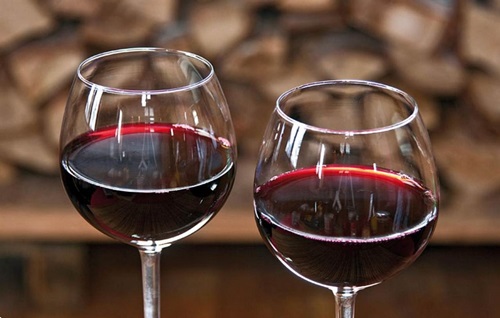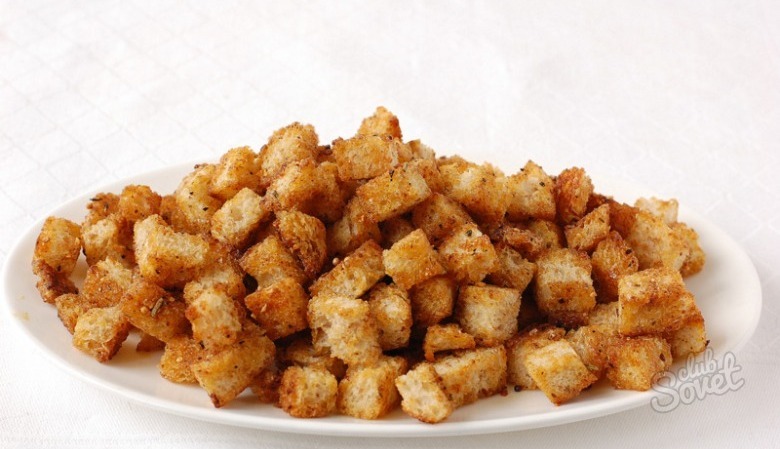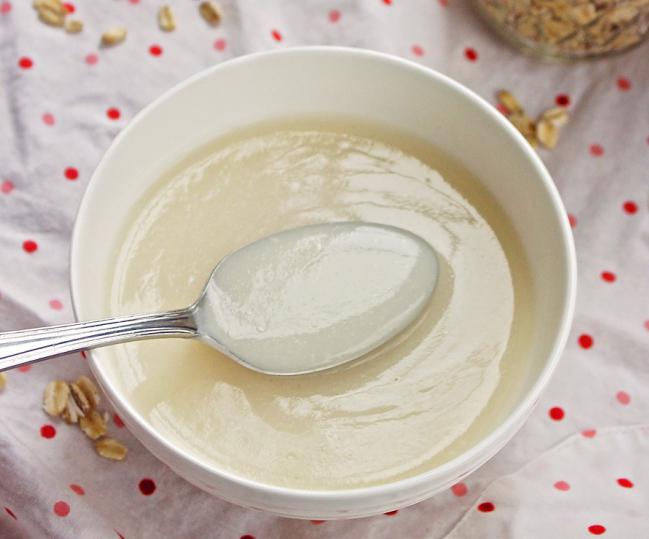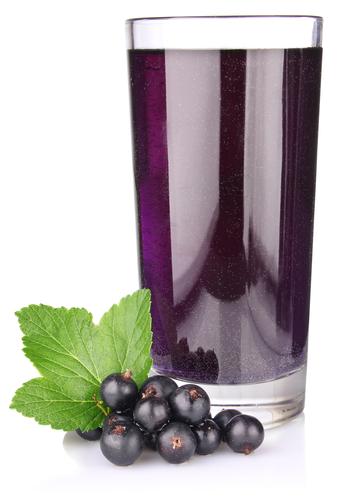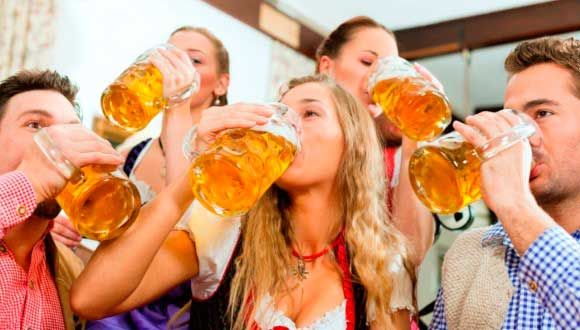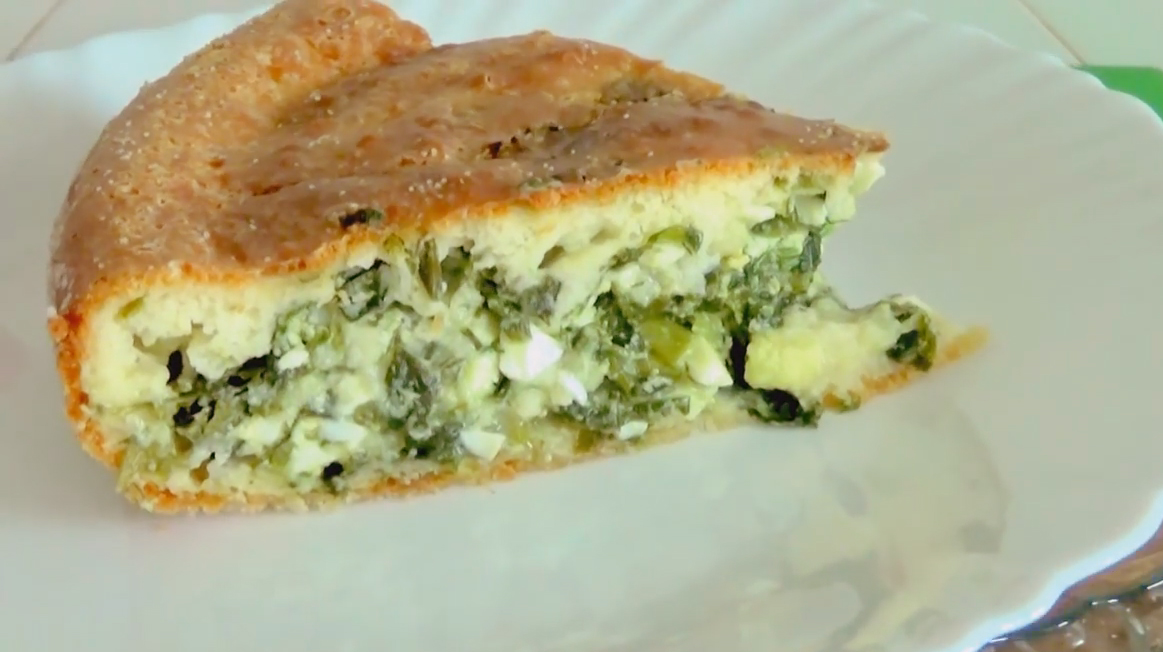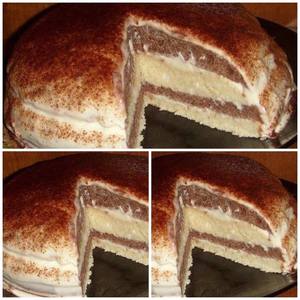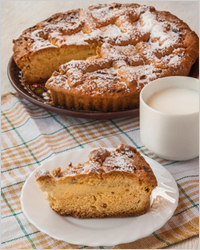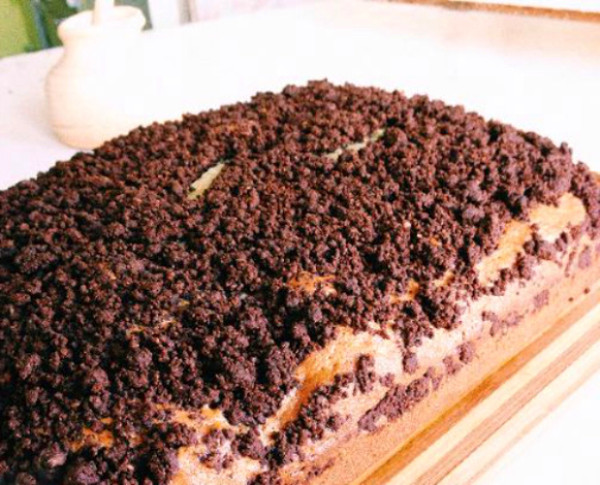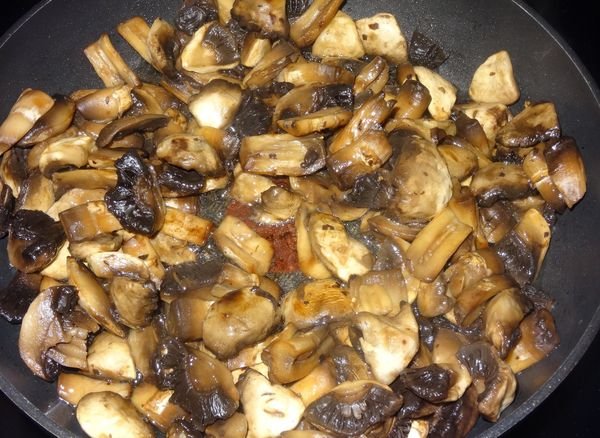How to make vanilla sugar? How can vanilla sugar be replaced? Vanillin - what is it? Vanilla sugar and vanillin are one and the same.
Vanilla sugar Is a white powdery product with a strong spicy aroma. Due to the fact that vanilla is expensive, they began to mix it with sugar, as a result of which such a product for cooking was called vanilla sugar.
Three varieties of vanilla sugar
Crystal vanilla sugar. It has a natural vanilla flavor. The advantage of this vanillin is that during any treatment it retains its beneficial substances and vitamins for a long time. It is used as an additive in ice cream, various pastry baking and other dishes.
Powdered Vanillin. It has miniature dimensions and a powder consistency. It contains a little more additional additives, and also has a stronger smell. This powder is added to the composition of chocolate. This type of vanillin is sold with different flavors: for example, fruit or berry. Such vanilla sugar melts easily in a warm liquid and has a sharp aroma at a low temperature.
Liquid vanillin. It is a kind of mixture of alcohol tincture and vanillin. The product is used to create various drinks, bakery and dairy products. It contains a large amount of carbohydrates, a little calcium, magnesium and copper.
The use of vanilla sugar
Vanillin is used in the preparation of various liquors, in cooking and perfumery. In the culinary field, vanilla sugar must be added strictly according to the recipe in a certain amount. If the amount of added vanillin exceeds the norm, then the dish will acquire a bitter note of taste. When baking put vanillin, which is highly resistant to temperature indicators. It is poured into the dough or placed into the mass during baking, while previously diluted in fat. The calculated data are as follows: up to ten grams of vanillin is put per kilogram of dough. When making chocolate, it is necessary to add, as a rule, crystalline vanillin or powdered vanilla sugar. Liquid vanilla, and extremely rarely powdery, is interfered with in dairy products. Here, up to two grams of vanilla sugar is used per liter of product.
Vanillin action
- It has good solubility in liquids, for example, in alcohol, warm water and its other types;
- It is used to improve odor and taste;
- The fragrance lasts for a long time on the skin and hair;
- It is used as a flavoring for home.
Benefit
- It has a calming effect due to the aroma;
- It helps well from insomnia, has a relaxing effect;
- Vanilla is considered an antioxidant and anti-carcinogenic.
Harm
Excessive use harms the walls of blood vessels, worsens their condition.
Home cooking
Making vanilla sugar yourself is quite simple. It will take one kilogram of granulated sugar, a bag of icing sugar and a pod of real vanilla. The longer the pod, the more useful and more valuable it is considered. The pod is cut into thin strips, the seeds are extracted, and then these strips are pushed to a mushy state, adding sugar in the end. Then all the components are mixed well and poured together with sand into a jar, a whole pod is placed on top. You need to insist the product for at least five days, under a tightly closed lid in a dark place. Seeds can not be thrown away, they can be added to face cream. The caloric content of such a product is 394 kcal.
Vanilla Pie Recipe
A delicious pie with vanilla and lemon cream. For its preparation you will need: dough, wheat flour (two glasses), baking powder (one teaspoon), eggs (three pieces), sugar (half a glass), butter (to grease the form), vanillin.
For butter cream: butter (about fifty grams), icing sugar (one bag), vanilla extract (a few drops).
For lemon cream: lemon (one piece), egg (one piece), sugar (about fifty grams), butter (one small spoon).
Natural vanilla and vanilla sugar
Recently made, already made ice cream itself. Vanilla is an important component there, of course you can without it, but it tastes better with it. The question arose of how natural vanilla differs from synthetic vanilla and what is vanilla in general, and where to get natural vanilla. And today I found the answer and a place where you can buy natural vanilla pods.
Actually, you can buy here - i-mne.com 5 pods cost 150 rubles. Description and photo of vanilla also from there.
Natural vanilla pods are specially dried creepers.
Natural vanilla gives a very subtle, but very significant difference in taste in the product.
“Sometimes it seems to me that adding vanilla to a raw-food recipe is like adding pure delight there: it seems like almost nothing has changed, but the cake becomes like a magic! Well, there’s just a lot more joy for those who try - just an order of magnitude more. Total a quarter of the pod and such an effect! I didn’t immediately see through this vanilla. " Nadezhda Semenova
What is natural vanilla good for and what is its difference from synthetic vanilla? It is one of the most expensive spices in the whole world due to the complex and long technological process of processing and the difficulty of growing. This prompted the synthesis of vanillin - its artificial substitute. But vanilla has vanished, and the substitute is a substitute, and it was not possible to completely repeat the subtlety and durability of real vanilla - due to the presence of minor odor components due to heliotropin and other components of vanilla essential oil.
Vanilla pods contain about 25% sugars, 15% fat, 30% cellulose and 6% minerals. The water content is quite high - 35%.
Among all the spices, vanilla is partly due to its price and partly due to its properties. Natural vanilla is used to flavor only the most expensive confectionery and sweet foods. In particular, chocolate and cocoa-containing biscuit products and products from biscuit dough creams of ice cream walnut cookies. In the recipe for other sweet dishes (stewed jelly mousse soufflé parfait puddings of cottage cheese pastes of some types of jams), vanillin is more often used although some of the aromatic properties of the finished product are lost.
In products subjected to heat treatment, vanilla is introduced either directly in front of it (into the dough) or immediately after the dish has not cooled yet (in compote soufflé pudding jam, etc.). In cold dishes (cottage cheese pastes) after cooking. In products requiring impregnation (biscuit cakes), vanilla is introduced in the form of vanilla syrup after baking.
The method of applying vanilla is raw and non-raw:
To introduce vanilla into non-raw products, it is usually thoroughly ground with powdered sugar until a homogeneous mass is obtained. Then the resulting vanilla sugar is mixed in the dough or sprinkled on the finished product.
Raw foods (cocktails, sweets, cakes, creams, etc.) are simply added with vanilla grains contained inside the pod. To do this, the pod (or part of it) is cut along with a knife - inside there will be something like jelly from grains - this is vanilla itself. The pod, if desired, can also be chopped and added, but it has much less taste and smell.
Consumption rates are small. When calculated per serving, the consumption is approximately 1/20 of the stick. When calculating per kilogram of products invested in the dough - 1/4 sticks. When preparing vanilla sugar, one stick of vanilla is enough for 1/2 kilogram of sugar. Oddly enough, to get vanilla sugar suitable for sprinkling on some confectionery products, it’s enough to just store vanilla sticks together with icing sugar in one jar. Sugar is saturated with a strong enough smell of vanilla. With proper storage, the durability of vanilla aroma is amazing, they can retain their aroma for up to 5 years !! Cases of preservation of all properties after 36 years from the date of production are known.
Also vanilla is sold here in this store:
www.seryogina.ru/shop/
There are 2 types:
Bourbon Vanilla
Vanilla from the islands of Reunion and Madagascar is characterized by the strongest, balanced and “dark” aroma, Mexican vanilla is softer and fresher in smell.
Vanilla Tahitian
(Vanilla Tahitiensis). These vanilla smells very different from real vanilla. Of course, these two vanilla are not very bad and can be used as spices under their own names. Tahitian vanilla, rarely available, comes from a closely related plant, also has a vanilla flavor, but more floral, which makes it stand out from other types. The aroma of vanilla from Tahiti is due to additional components - piperonal and diacetyl.
Often it is considered low-quality, but it deserves kind words as a separate spice.
Also on sale are glass flasks for storing vanilla. :-) Tahitian vanilla and bourbon madagascar pod length 15-17.5 cm, organic, packed in a glass flask. There is a flask of 20 rubles. :-))
From this store they also wrote:
"Apparently we will have more Mexican vanilla and powder vanilla. :)"
It turns out that there are so many types of vanilla !!
I did not like the bourbon vanilla. Anyway, I will use synthetic, it is much more interesting in terms of aroma. Another thing is that you need to buy it without flavorings ...
Vanillin and vanilla sugar are a powder that consists of many ingredients. The main aroma and taste are given by natural vanilla contained in small quantities. Vanilla itself is a very expensive seasoning, but in order to use its beneficial properties, smell and taste, which improve the aroma of butter dishes, it made vanillin and vanilla sugar available for our table. Vanilla sugar can be made with your own hands.
Types of Vanillin
- There are several types of vanillin. One of them is crystalline. It has a real vanilla flavor. Crystalline vanillin retains its beneficial properties for a long time, even after a high processing temperature. Used for baking, making confectionery and ice cream.
- There is a type of powdered vanillin. It is smaller, in its composition contains more various enhancing additives and has a harsher odor. This type of vanillin is suitable for making chocolate. The aroma of such vanillin is already felt at room temperature. In water, it dissolves more easily. Such vanillin can have a variety of berry and fruit aromas.
- Liquid vanillin is a mixture of vanillin dissolved in alcohol. It is used for the manufacture of drinks, confectionery and dairy products.
How is vanillin used?
Vanillin is used in perfumes, in the manufacture of liquors and in cooking. In cooking, vanillin should be used in an amount that depends on the time of preparation of the dish, the cooking temperature, the consistency of the cooked dish. Too much vanillin can add bitterness to a dish. When cooking rich flour dishes, vanillin is usually chosen with high resistance to temperature. Vanillin is added to these dishes while mixing all the dry ingredients of the dish. Or they can be added at any stage of preparation, previously dissolved in fat.
Typically, 4 to 9 grams of vanillin is added per kilogram of dough. In the manufacture of chocolate, vanillin is usually used in the form of crystals or powder. If you want to improve the aroma of products containing a milk base, use vanilla in liquid or powder form. Here, 1 liter of products should use from 0.5 to 2 grams of vanillin and vanilla sugar.

Vanillin action
- Vanillin is highly soluble in alcohol, hot water and ether.
- Vanillin is used to enhance the aromas of dishes, flavoring ingredients.
- It helps to hide or soften the unwanted taste in the dish.
- Vanilla aroma remains on the hair and skin for a long time, acting soothingly.
- Vanillin gives the drinks a mild flavor and a pleasant aroma. With it, you can improve the aroma in the house.
What is vanilla sugar?
Vanilla sugar is nothing but mixed vanilla pods with sugar or powdered sugar. Sugar takes over all the smell of vanilla on itself, and after vanilla is taken out of it. It is more convenient for use in culinary production, as it practically does not contain additives. If vanilla sugar is stored for too long, the smell of vanilla can evaporate. It is used for making cream, creams, fruit compotes, dairy dishes. Vanilla sugar is very suitable for baking, cocktails, coffee. It must be added at the very end of cooking so that its aroma does not evaporate too quickly.
How to make vanilla sugar with your own hands?
Vanilla sugar can be made with your own hands. To do this, take 1 kg of sugar, powdered sugar and 1 pod of natural vanilla. Try to buy only the longest pods. They are considered the most valuable. Cut the vanilla pod along. Take out all the seeds, they must be crushed in a mortar and add icing sugar. After mixing, pour the mixture into granulated sugar, mix again and put the pod there. Vanilla seeds can be added directly to cream or cream, and for the preparation of vanilla sugar use only the pod. Store the sugar in a carefully closed jar in a dark, cool place. Leave to infuse for 4 days and you can enjoy real vanilla sugar.
How to make Vanilla Muffins?
Take 400 g of pancake flour, 1 teaspoon of soda, 250 g of sugar, 150 g of butter, 2 tbsp. tablespoons of vanilla sugar, 2 eggs and 0.5 sour cream. Combine flour, soda and sugar. Melt the butter and pour in the same. Add eggs, vanilla sugar and sour cream. Mix all this gently. The dough needs to be divided by paper forms, it will turn out about 14 pieces. Bake them at 180 C for 15 minutes until they turn golden.
What are vanilla and vanilla sugar good for?
Vanilla has a calming effect on the body. The smell of vanilla will help in the treatment of some serious diseases. It will tame anger, eliminate the feeling of anxiety and irritation. The smell of vanilla can relax, help with insomnia, relieve anxiety, will have a stimulating effect on the body and will cheer you up. Vanilla, which is the main component of vanillin and vanilla sugar, is an antioxidant, antidepressant, and anti-carcinogen.
Vanilla sugar can be replaced with vanilla essence (instead of 20 g of vanilla sugar, 12.5 g of vanilla essence will be required) or vanilla extract (10-15 g of vanilla sugar will replace 1 teaspoon of the extract). But if you don’t have any of the above at hand, you can completely ignore vanilla sugar as an ingredient: the dish will work without it, however, it will not please you with a delicate vanilla aroma.
Which is better to buy: vanilla, vanillin or vanilla sugar?
If at least sometimes you bake something at home or prepare desserts, you are probably buying vanilla, vanilla sugar or vanilla. Or for now, just thinking about it. What is the difference between these additives? What you need to buy and what you do not need? Let's see, smell and decide - and all in one small article!
Vanilla - This is a wonderful plant, the pods of which have a tremendous aroma, and therefore are very much appreciated. I think that at least once in your life you had to smell natural vanilla or the products in which it was. Well, if not, I strongly advise you to buy and try. There is only one drawback to natural vanilla: it is very expensive. A bag with a vanilla pod weighing 2-4 grams costs 70-100 rubles! As a rule, vanilla can be found in supermarkets of the middle class and above. 
Vanillin - This is the main component of vanilla, responsible for the characteristic "vanilla" flavor. Roughly speaking, this is a concentrated aroma of the essence of vanilla. Of course, it can be obtained from natural vanilla, but then it will cost a lot of money. Therefore, usually vanillin is synthesized in laboratories. And it is called a flavor identical to natural vanillin. However, vanillin is not always labeled as “flavoring identical to natural” in the sold sachets. Sometimes you can read “ethylvaniline,” which is essentially the same thing. 
It is worth noting another feature of vanillin: it is a very “strong" supplement. The recommended dose of vanillin per 1 kilogram of dough is only 1 gram. If you can add it too much, then the baking will have a specific bitter taste, and the aroma can become frankly intrusive. Well, in creams and desserts that are not baked, crystalline vanillin is generally not recommended to be added.
Where the best option would be vanilla sugar.
Vanilla sugar can be obtained in two ways. First, mix with natural sugar or powdered vanilla sugar or powdered sugar. Secondly, mix artificially produced vanillin with sugar. Vanilla sugar, prepared in the second way, is more common and cheaper. But it’s the first option that’s worth buying: with natural vanilla. A bag of such natural vanilla sugar costs 25-40 rubles per 10-15 grams. The most common brands producing this supplement are Dr. Oetker, Kotanyi. At the same time, Dr. Oetker also has a budget option, with vanilla instead of natural vanilla.
Vanilla sugar is characterized by a relatively low concentration of vanilla, so that it can be used already in noticeably large quantities than vanillin. On the other hand, it ends pretty quickly. And here we come to another option - vanilla sugar, prepared independently.
It’s quite possible to make it yourself from purchased legume vanilla. From one vanilla pod you need to carefully clean the contents, add it to a couple of tablespoons (about 40 grams) of sugar or (better) powdered sugar and leave it in a closed container for a week. If you want a more intense concentration, you can take more vanilla or less powder. If less intense, add more powder.
Vanillin and vanilla sugar are a powder that consists of many ingredients. The main aroma and taste are given to them by natural vanilla contained in small quantities. Vanilla itself is a very expensive seasoning, but in order to use its beneficial properties, smell and taste, which improve the aroma of butter dishes, it made vanillin and vanilla sugar available for our table. Vanilla sugar can be made with your own hands.
Types of Vanillin
- There are several types of vanillin. One of them is crystalline. It has a real vanilla flavor. Crystalline vanillinretains its useful properties for a long time, even after a high processing temperature. Used for baking, making confectionery and ice cream.
- There is a view powdered vanillin. It is smaller, in its composition contains more various enhancing additives and has a harsher odor. This type of vanillin is suitable for making chocolate. The aroma of such vanillin is already felt at room temperature. In water, it dissolves more easily. Such vanillin can have a variety of berry and fruit aromas.
- Liquid vanillin is a mixture of vanillin dissolved in alcohol. It is used for the manufacture of drinks, confectionery and dairy products.
How is vanillin used?
Vanillin is used in perfumes, in the manufacture of liquors and in cooking.
In cooking, vanillin should be used in an amount that depends on the time of preparation of the dish, the cooking temperature, the consistency of the cooked dish. Too much vanillin can add bitterness to a dish. When cooking rich flour dishes, vanillin is usually chosen with high resistance to temperature. Vanillin is added to these dishes while mixing all the dry ingredients of the dish. Or they can be added at any stage of preparation, previously dissolved in fat. Typically, 4 to 9 grams of vanillin is added per kilogram of dough. In the manufacture of chocolate, vanillin is usually used in the form of crystals or powder. If you want to improve the aroma of products containing a milk base, use vanilla in liquid or powder form. Here, 1 liter of products should use from 0.5 to 2 grams of vanillin and vanilla sugar.
Vanillin action
- Vanillin is highly soluble in alcohol, hot water and ether.
- Vanillin is used to enhance the aromas of dishes, flavoring ingredients. It helps to hide or soften the unwanted taste in the dish.
- The aroma of vanilla stays on the hair and skin for a long time, acting soothingly.
- Vanillin gives the drinks a mild flavor and a pleasant aroma. With it, you can improve the aroma in the house.
What is vanilla sugar?
Vanilla sugar is nothing but mixed vanilla pods with sugar or powdered sugar.. Sugar takes over all the smell of vanilla on itself, and after vanilla is taken out of it. It is more convenient for use in culinary production, since it contains virtually no additives. If vanilla sugar is stored for too long, the smell of vanilla can evaporate. It is used for making cream, creams, fruit compotes, dairy dishes. Vanilla sugar is very suitable for baking, cocktails, coffee. It must be added at the very end of cooking so that its aroma does not evaporate too quickly.
How to make vanilla sugar with your own hands?
Vanilla sugar can be made with your own hands. To do this, take 1 kg of sugar, powdered sugar and 1 pod of natural vanilla. Try to buy only the longest pods. They are considered the most valuable. Vanilla pod cut along. Take out all the seeds, they must be crushed in a mortar and add icing sugar. After mixing, pour the mixture into granulated sugar, mix again and put the pod there. Vanilla seeds can be added directly to cream or cream, and for the preparation of vanilla sugar use only the pod. Store the sugar in a carefully closed jar in a dark, cool place. Leave to infuse for 4 days and you can enjoy real vanilla sugar.
How to make Vanilla Muffins?
Take 400 g of pancake flour, 1 teaspoon of soda, 250 g of sugar, 150 g of butter, 2 tbsp. tablespoons of vanilla sugar, 2 eggs and 0.5 sour cream. Combine flour, soda and sugar. Melt the butter and pour in the same. Add eggs, vanilla sugar and sour cream. Mix it all gently. The dough needs to be divided by paper forms, it will turn out about 14 pieces. Bake them at 180 C for 15 minutes until they turn golden.
What are vanilla and vanilla sugar good for?
Vanillin with its smell has a calming effect on the body. The smell of vanilla will help in the treatment of some serious diseases. It will tame anger, eliminate the feeling of anxiety and irritation. The smell of vanillin can relax, help with insomnia, relieve anxiety, will have a stimulating effect on the body and will cheer you up. Vanilla, which is the main component of vanillin and vanilla sugar, is an antioxidant, antidepressant, and anti-carcinogen.

That is why vanillin is able to reduce pressure, help with cramps, fever, allergies, inflammation, arthritis and hysteria. He will be able to activate the brain, and even creative abilities. Vanilla sugar helps in normalizing the digestive process. Vanillin also belongs to aphrodisiacs.
Vanilla, which is the basis of vanillin and vanilla sugar, remains one of the most expensive spices. Vanillin and vanilla sugar are widely used in many fields of activity, but they are most used in cooking. Vanilla gives the dishes a mild flavor. The aroma of vanilla in them has a calming effect on humans. They combined both health benefits and excellent abilities to give a unique taste and aroma to any dish.
Specially forLucky girl. ru- Yulia
It would seem that such a question as vanilla and vanillin: what is the difference between them, for an experienced chef is not worth it. But for an amateur, it is often not a problem just to open a bag of vanilla and use it. Are there any differences? How do these concepts differ?
What is what
It is a wonderful tropical plant, a relative of orchids. This is a vine with delicate yellow-green flowers. Natural vanillin can be seen on the surface of the fruit of the plant at the end of a special procedure called fermentation. The substance appears as a colorless crystalline powder. Vanillin has a characteristic smell and taste.
Scientists have learned to create a synthetic analogue of vanillin. Paper production is accompanied by the formation of a by-product. It is a brown liquid containing the product of the interaction of lignin (wood polymer) with sulfurous acid. The mixture is treated with alkalis and oxidizing agents. Synthetic vanillin is isolated from this substance.
Natural vanilla began to be replaced with artificially synthesized solely because of the high cost of the pods. Synthetic analogues are used in perfumery, in pharmacology, in food and confectionery production, in the manufacture of alcoholic beverages.
Since the 2000s French manufacturer Rhodia has developed a technology for the production of biosynthetic vanillin. The French use ferulic acid obtained from rice bran as raw materials, and special bacteria provide direct synthesis of the finished product. The French counterpart can be recognized as a flavoring agent of natural origin. Especially taking into account the fact that vanilla is formed on the surface of pods with the direct participation of the same ferulic acid.
Principal difference
The fundamental difference between vanilla and vanilla is the natural origin. This fact causes all other differences:
- the aroma of a natural product is formed from more than 400 components. Vanilla note, of course, is dominant, but the nuances that support it are also important, because these are cinnamon esters, anise alcohol, aldehyde;
- the use of artificial substitutes is limited to the scope of aromas. They can be used in aromatherapy. But there will be no vitamins or minerals in them, that is, only natural vanilla has healing properties;
- scientifically, the harm of artificially obtained substitutes is not proven. But what exactly they will differ from natural vanillin in is an admixture, even in very small doses, of propylene glycol and coumarin. The latter is known as a carcinogen;
- food allergies can occur both on a natural product and on a synthetic one. It happens that a person calmly tolerates vanilla, but gives an allergic reaction to its substitute, but it can be vice versa.
In 2009, Cook’s Illustrated (USA), a culinary magazine, conducted an experiment to reliably establish: vanilla and vanillin are still the same thing or not. A group of non-professional tasters were offered to compare desserts, in the preparation of which both natural vanilla and synthetic vanillin were used.
The answers to the question whether it is possible to replace a natural product with an artificial one, sounded like this:
- for puddings and milk desserts, it is preferable to take natural ones;
- there were no particular differences in baking, although some tasters noted that cookies made in a hot oven using an artificial flavor seemed to them tastier.
What ultimately to choose: or vanilla; everyone decides for himself. However, not being a specialist in the field of spices, it is easier to determine the quality of the pods, which normally should be slightly oily and elastic, than to distinguish natural vanilla sugar from its analogue with lignin.
